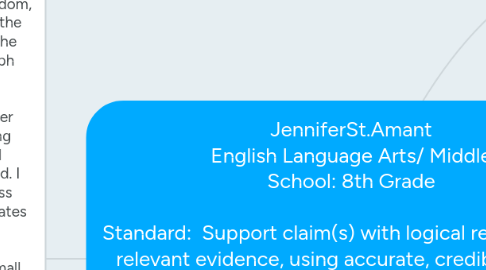JenniferSt.Amant English Language Arts/ Middle School: 8th Grade Standard: Support claim(s) with logical reasoning and relevant evidence, using accurate, credible sources and demonstrating an understanding of the topic or text Big Ideas: Claims, Evidence, Sources, Text
создатель Jennifer St. Amant


